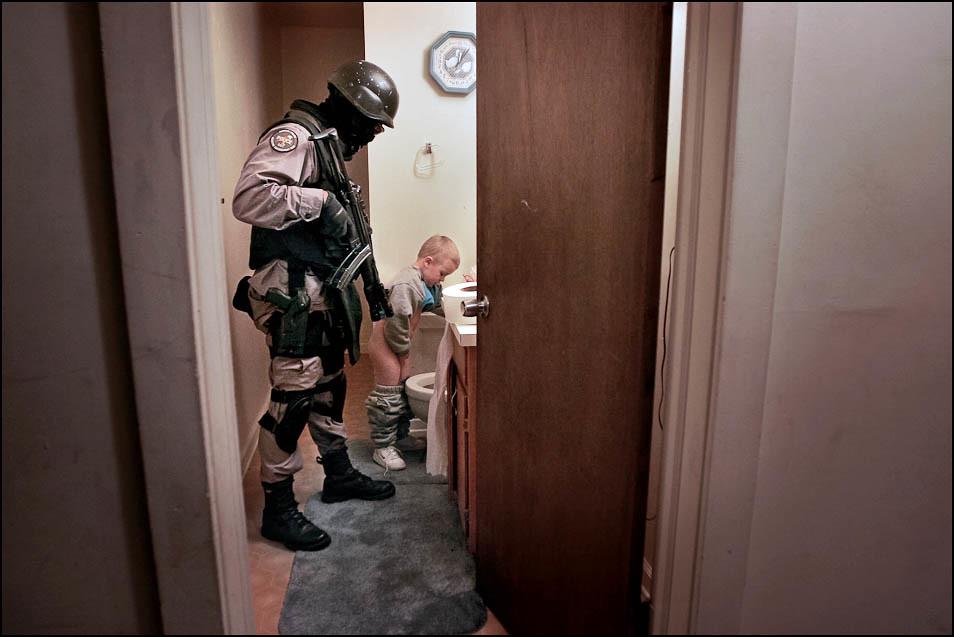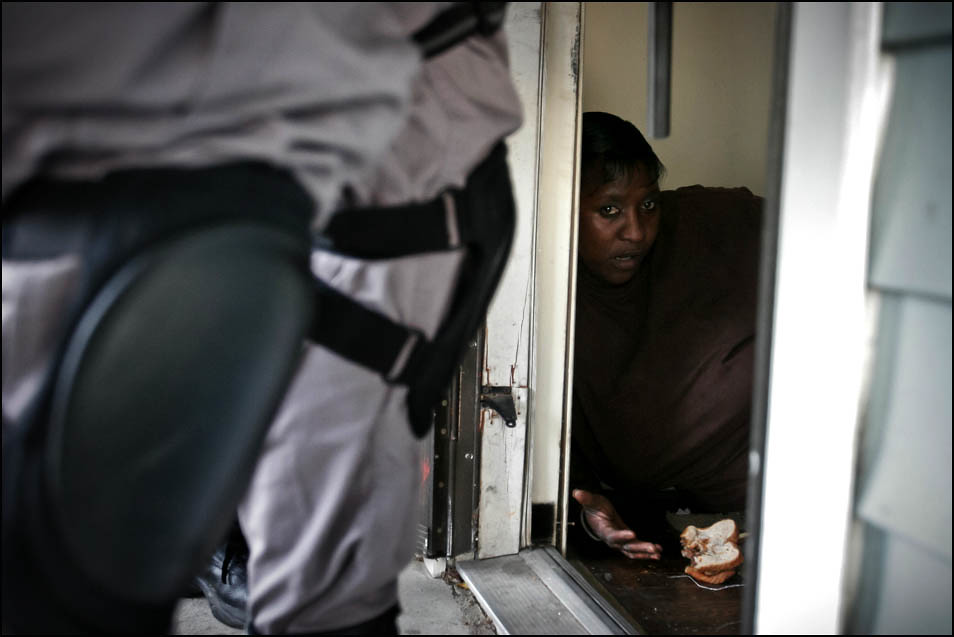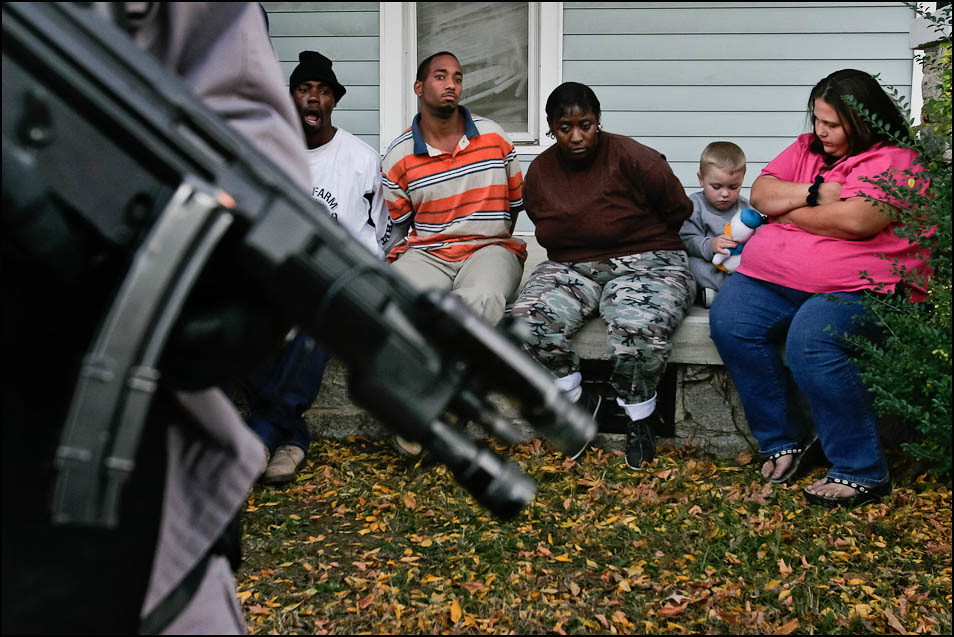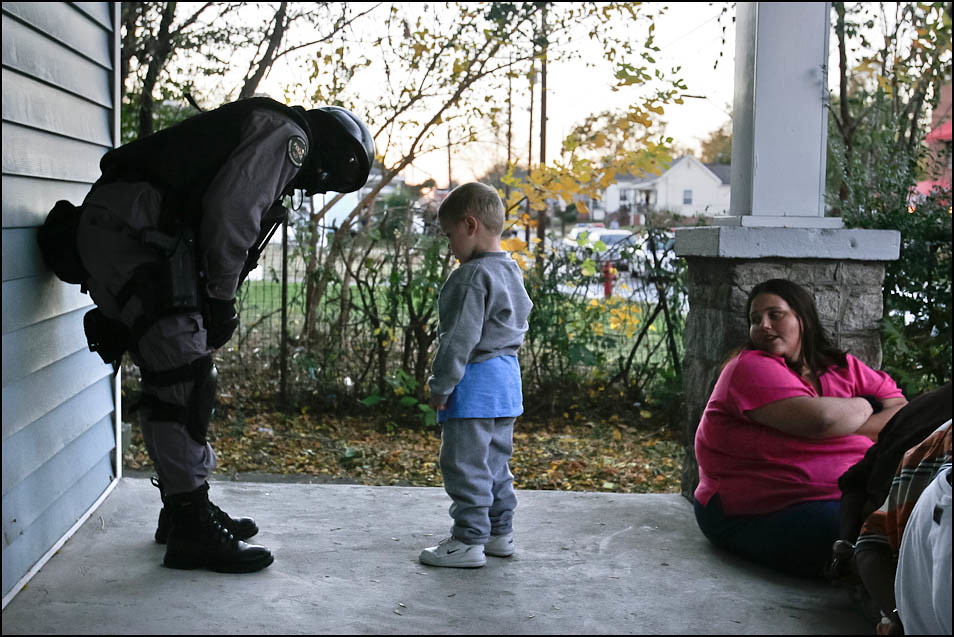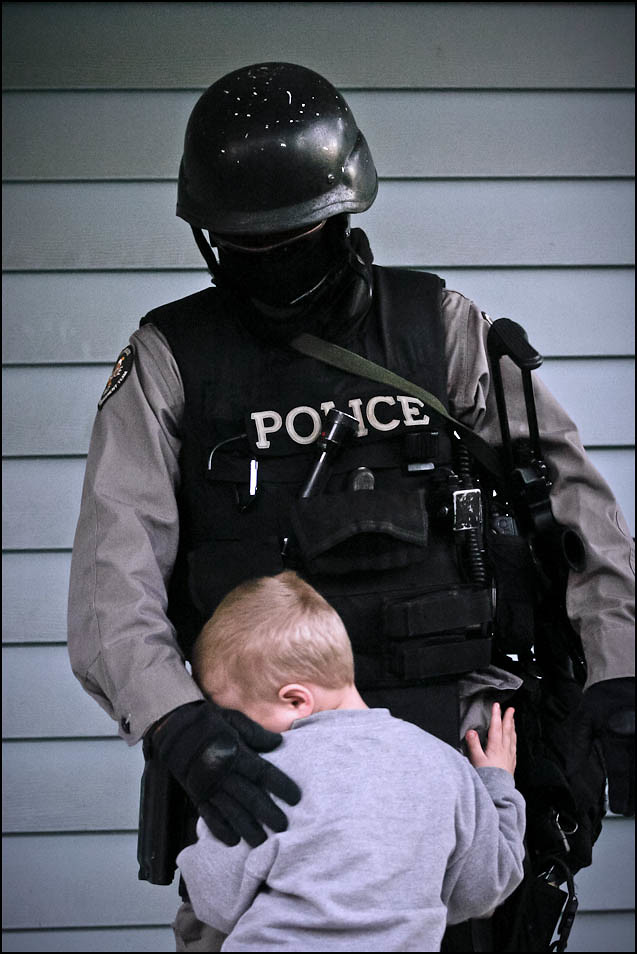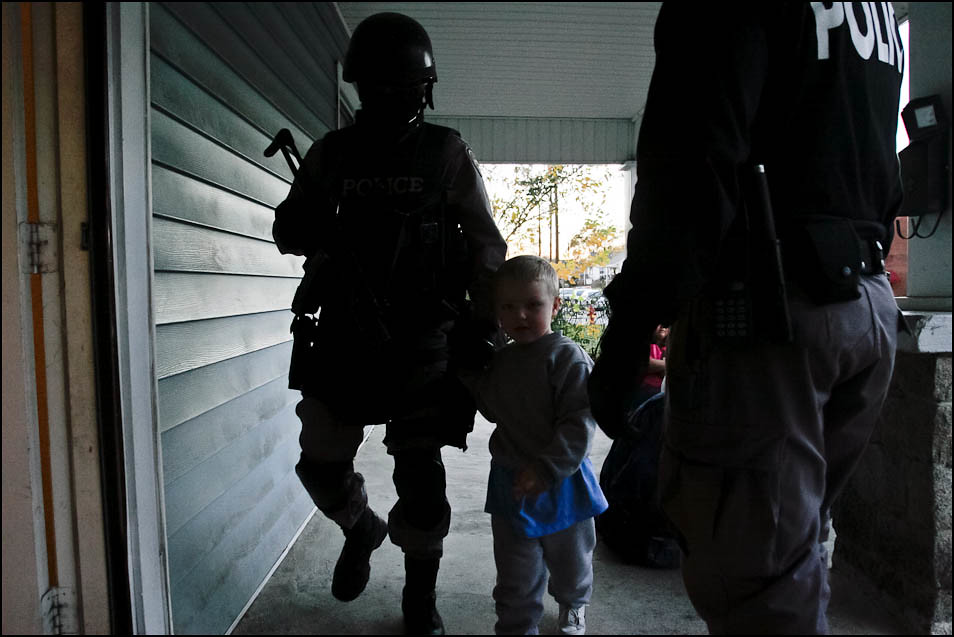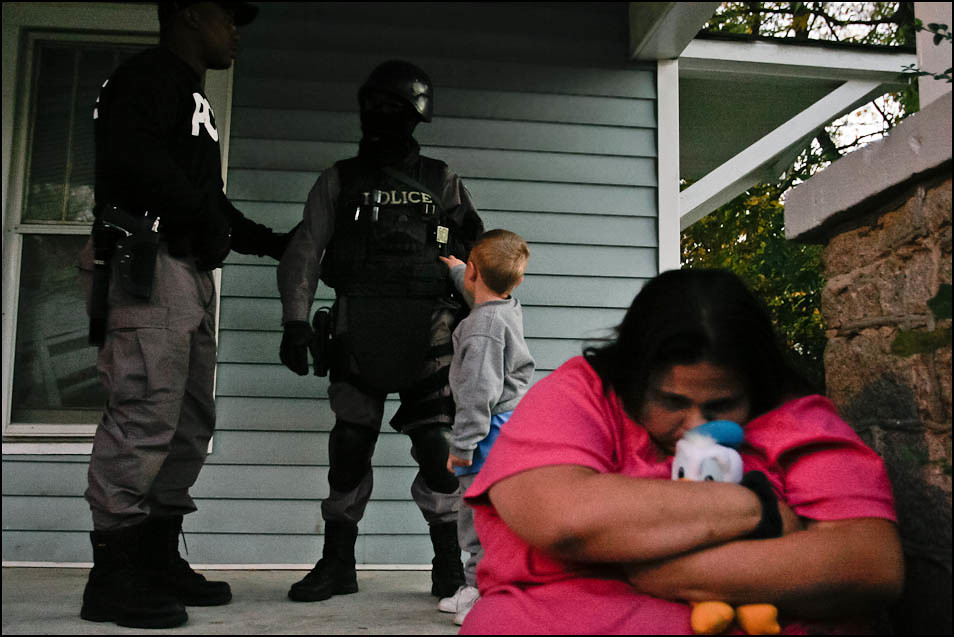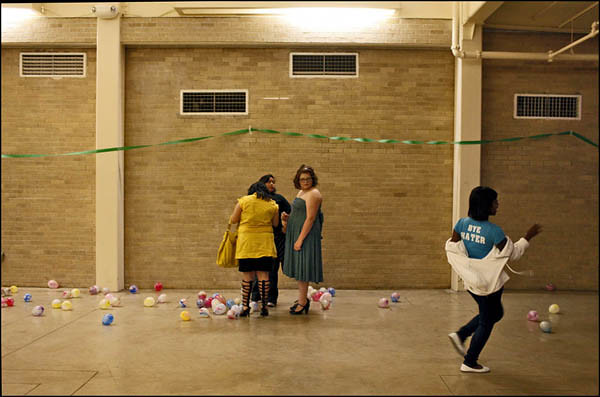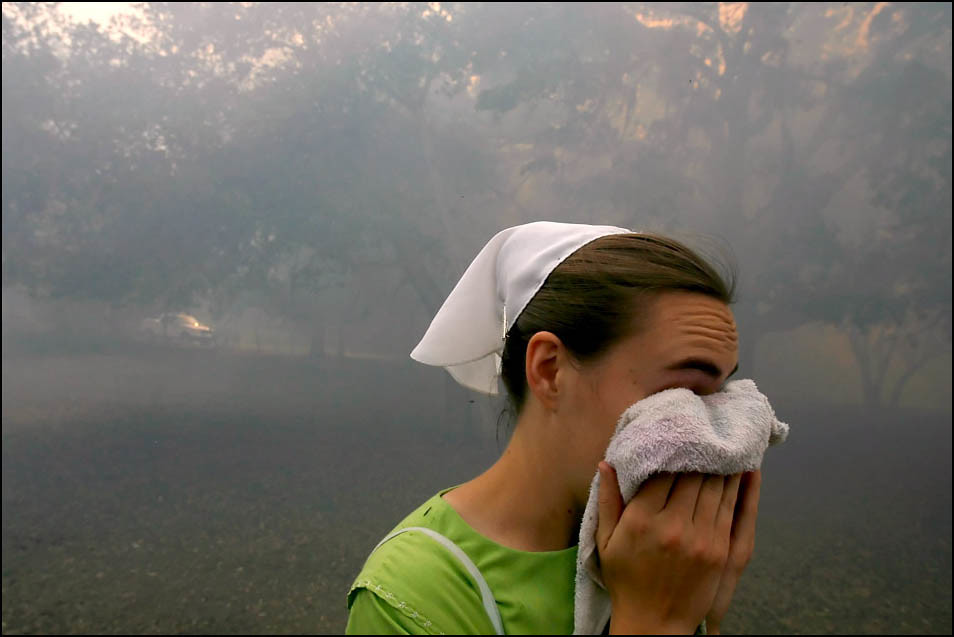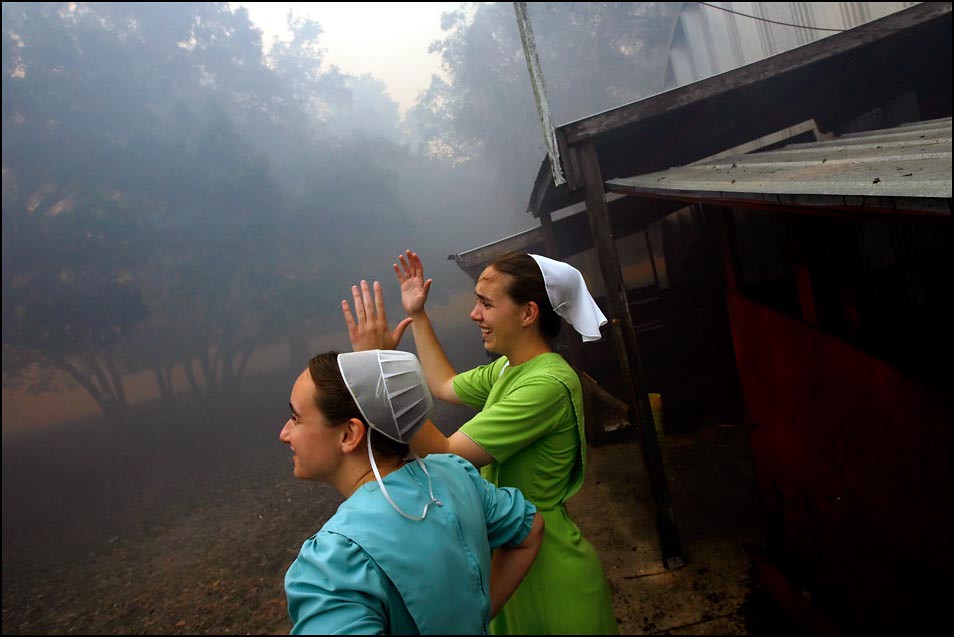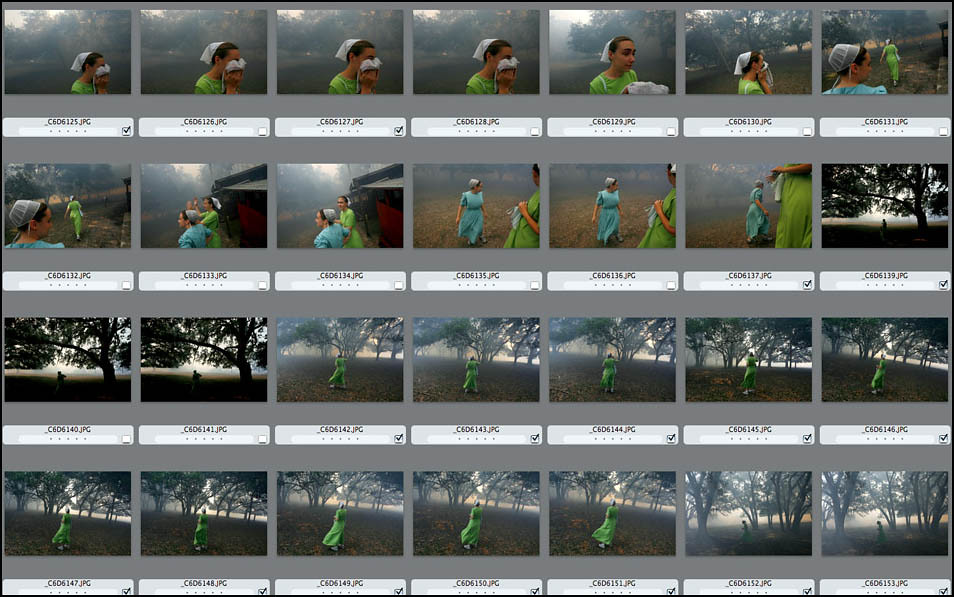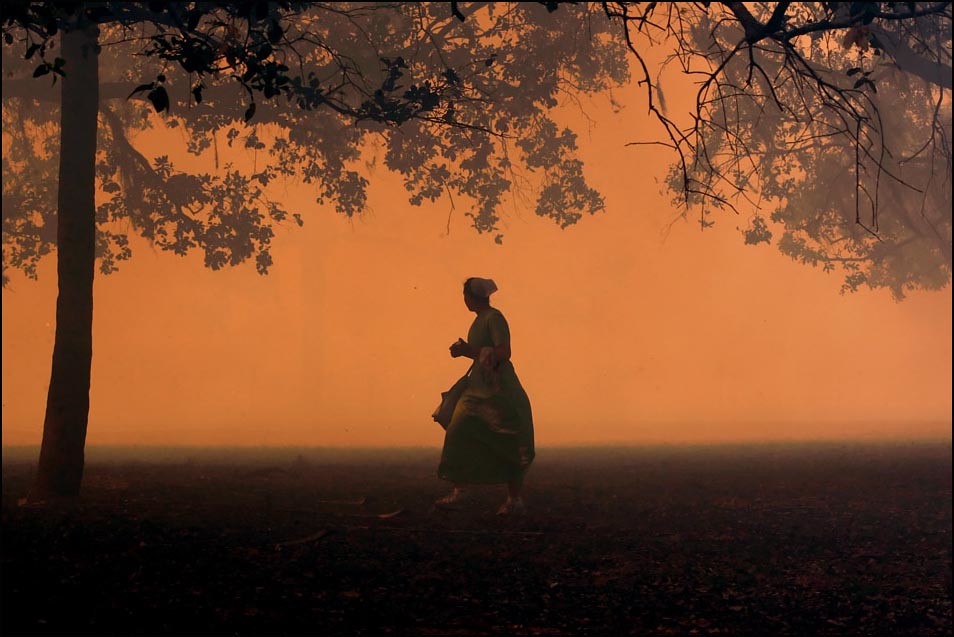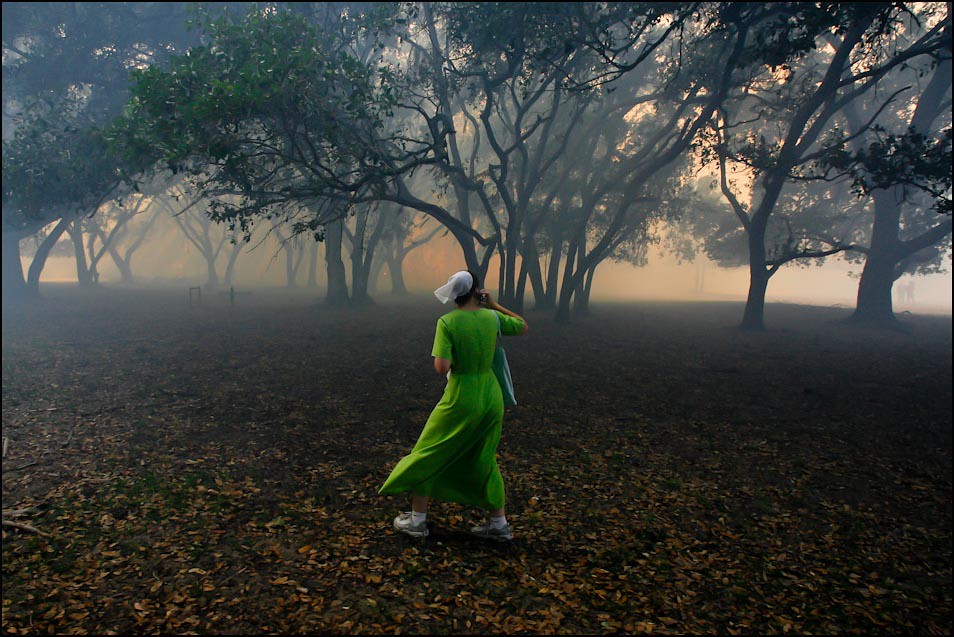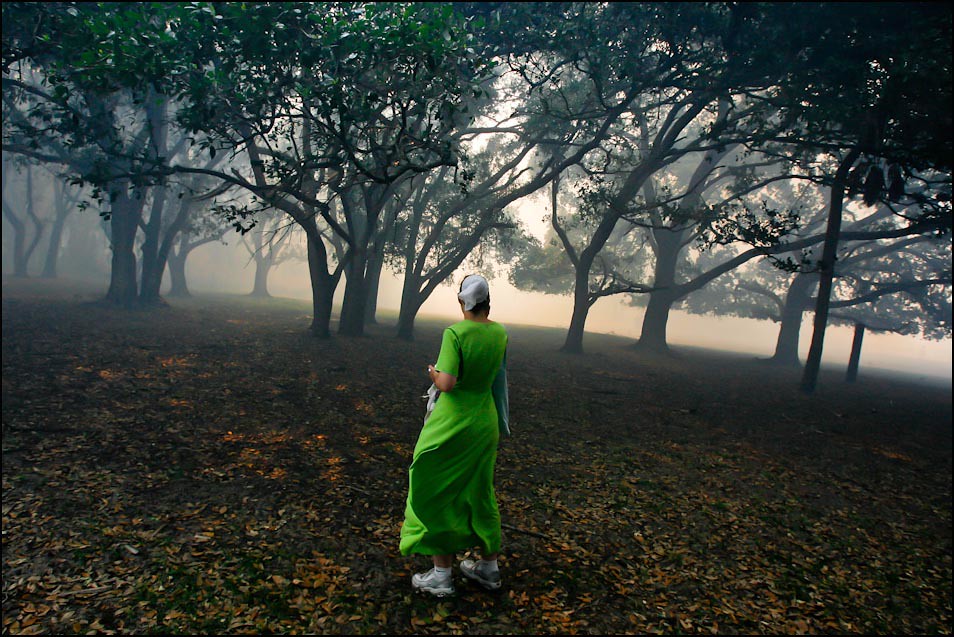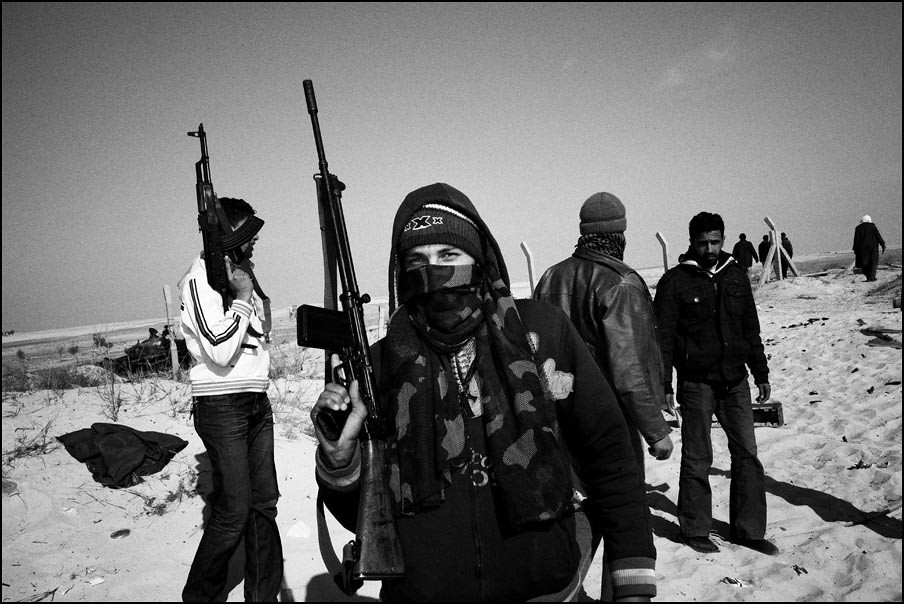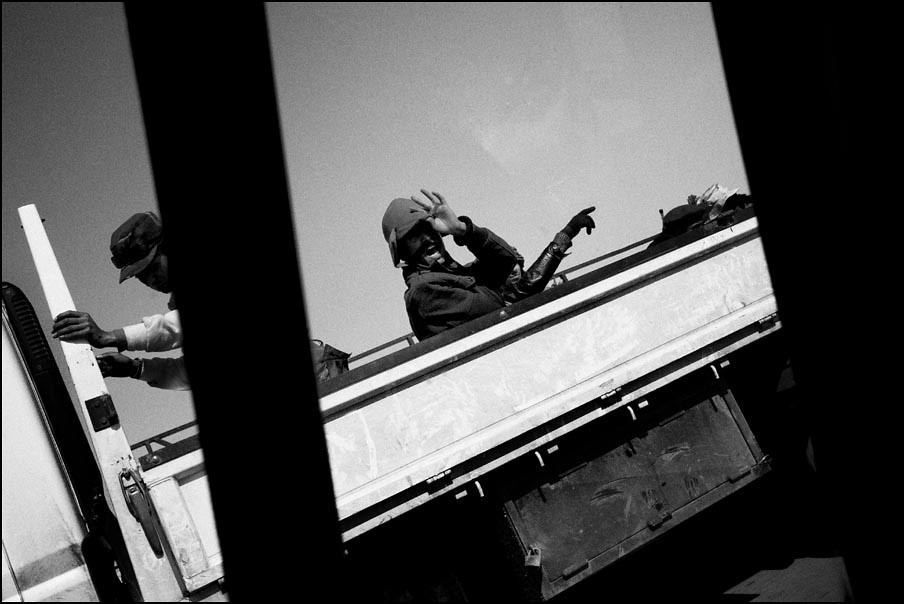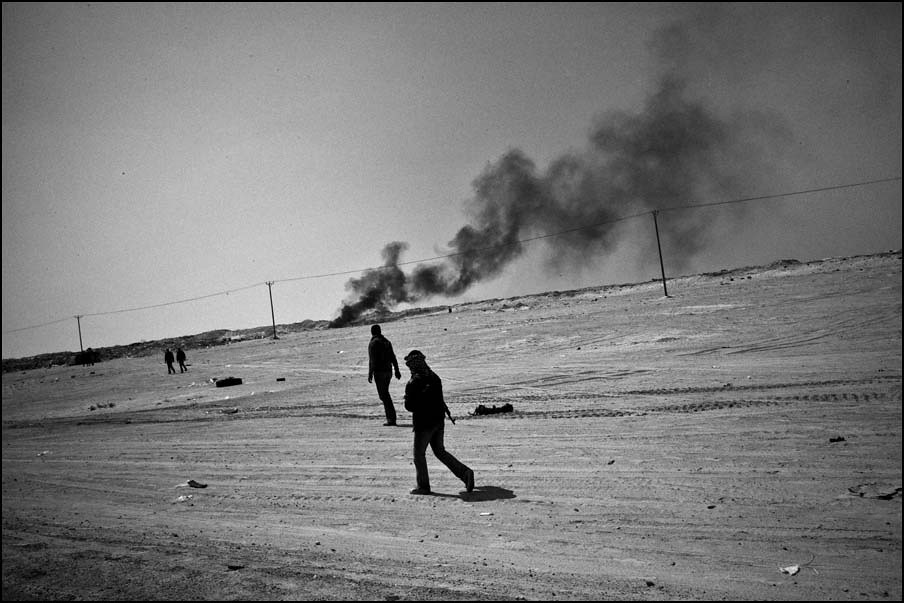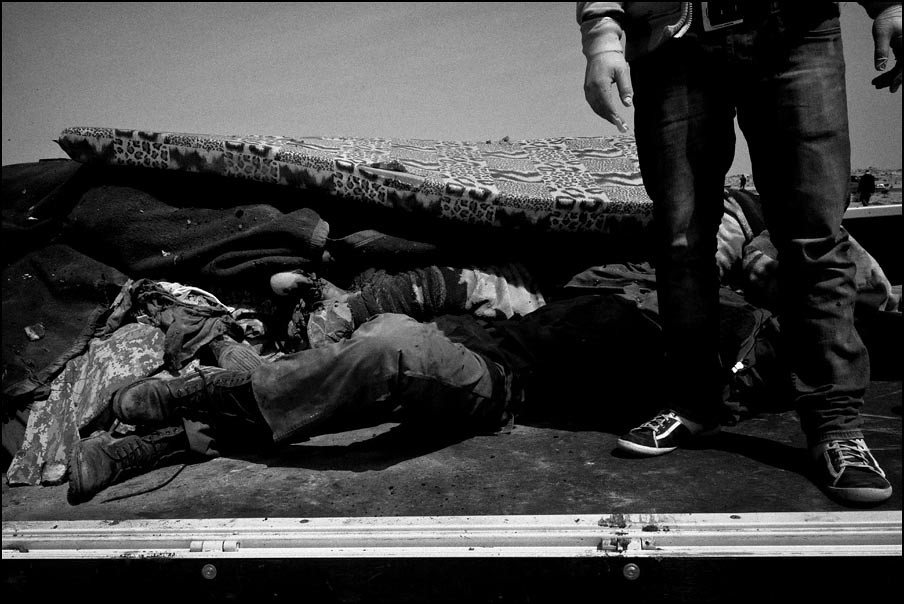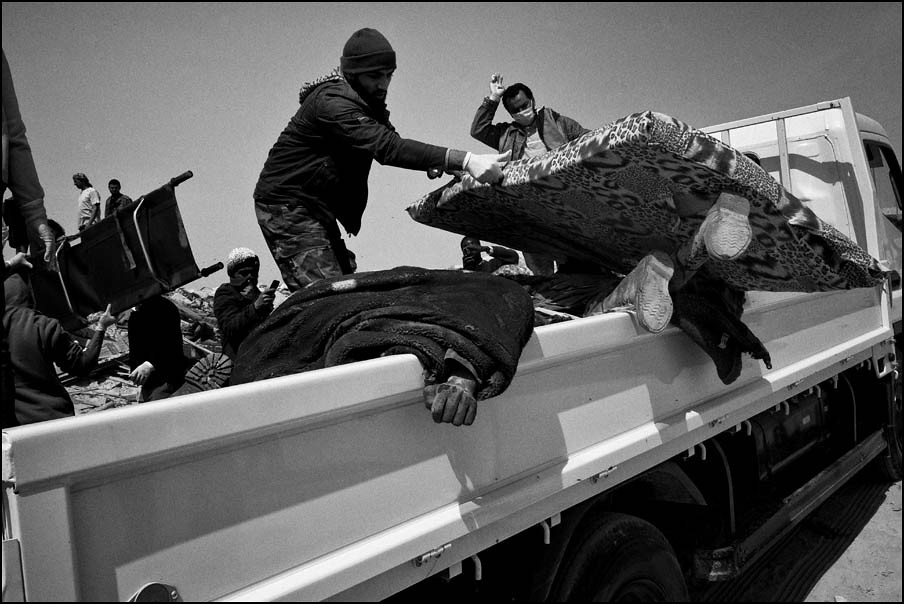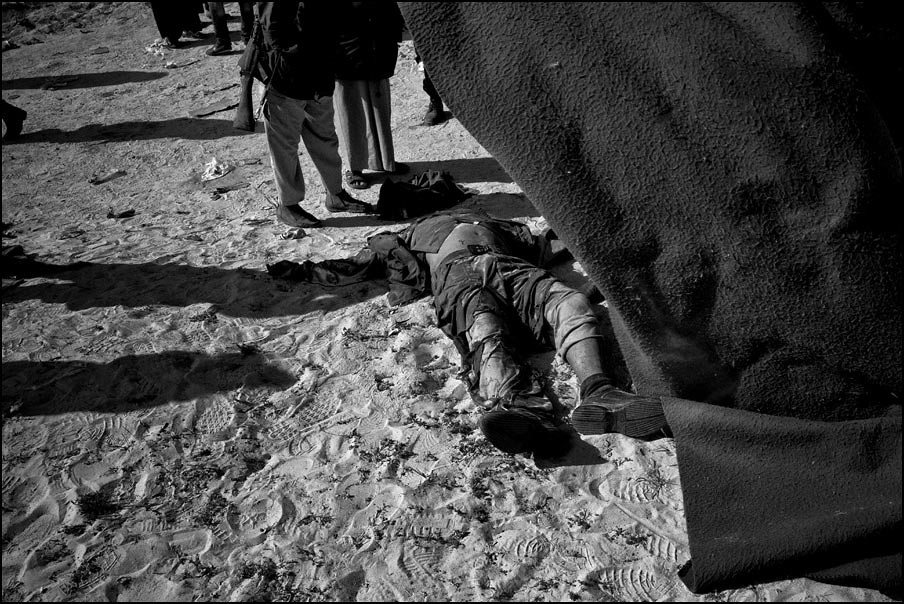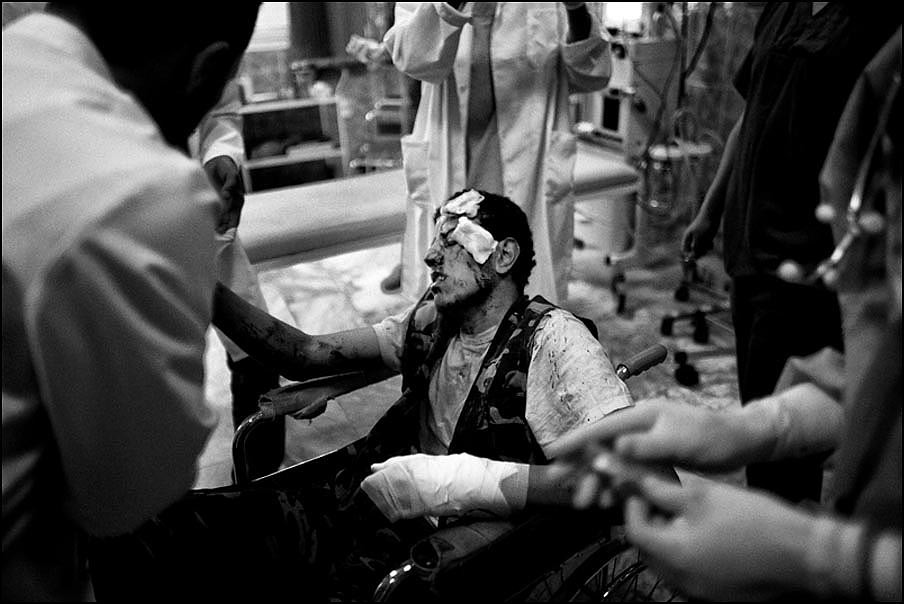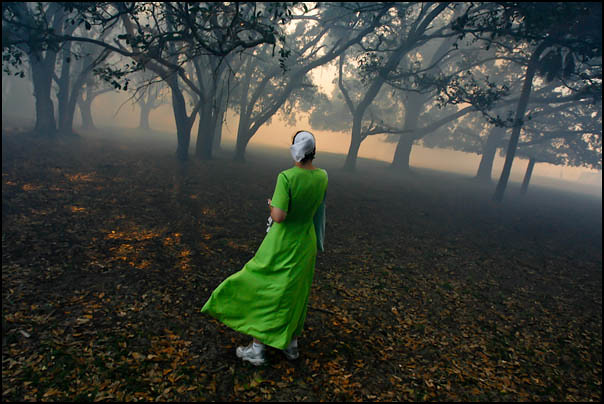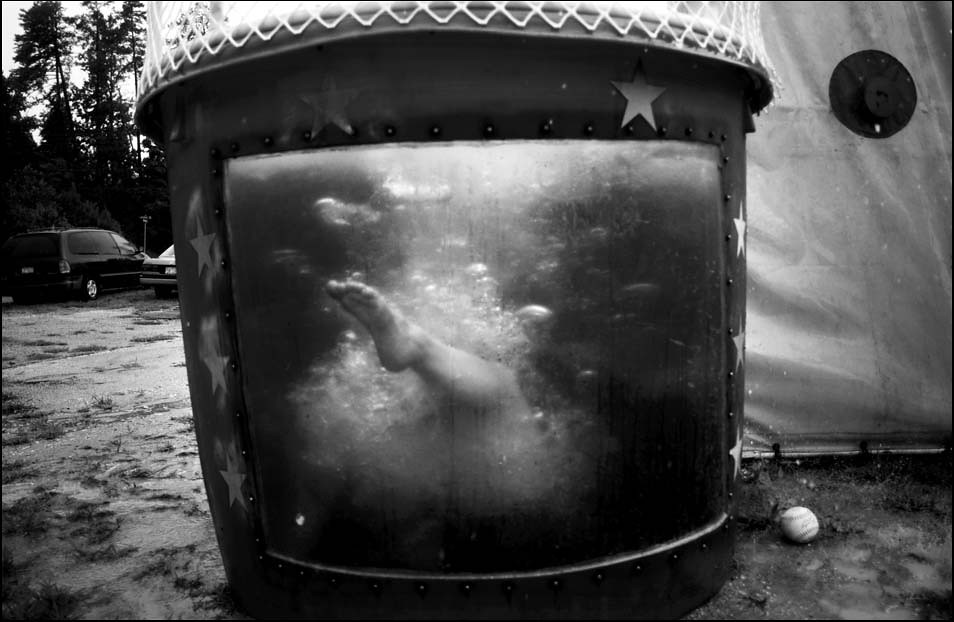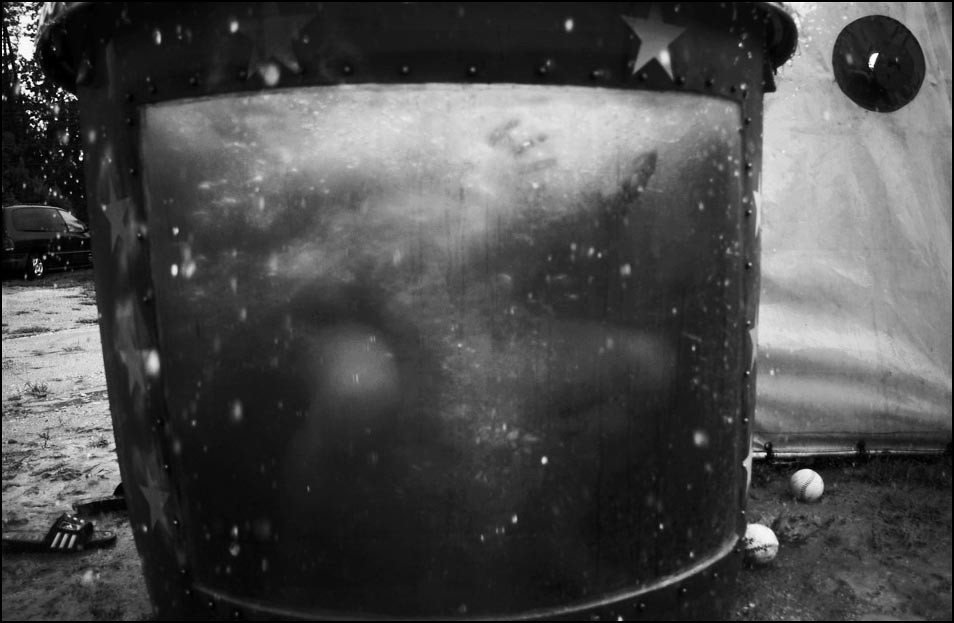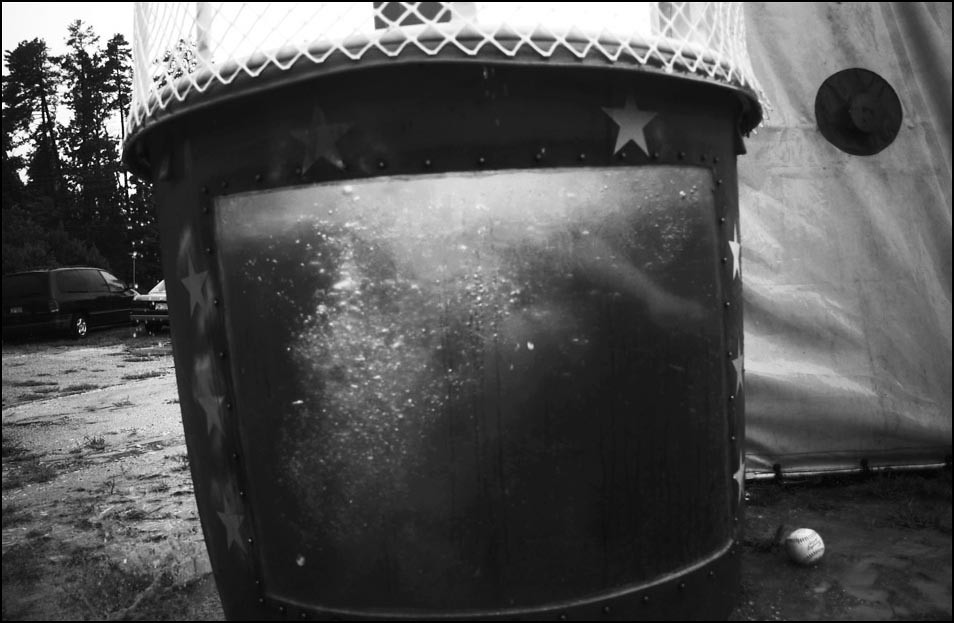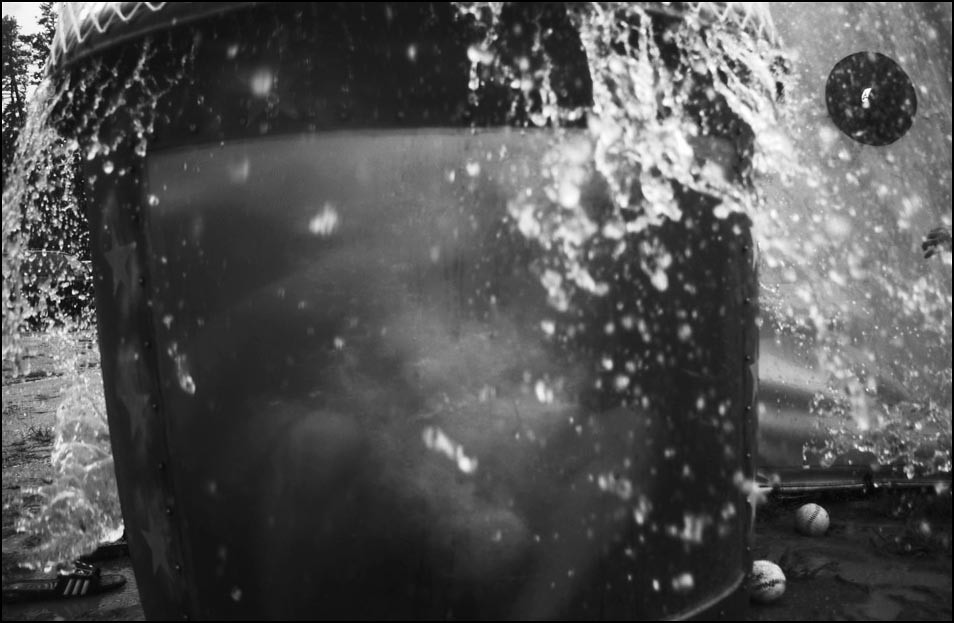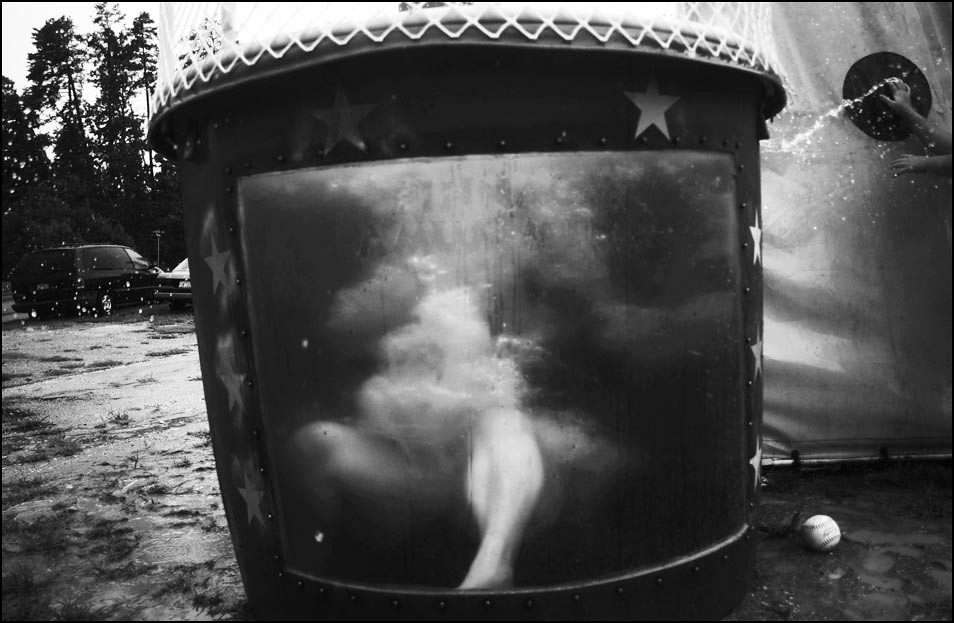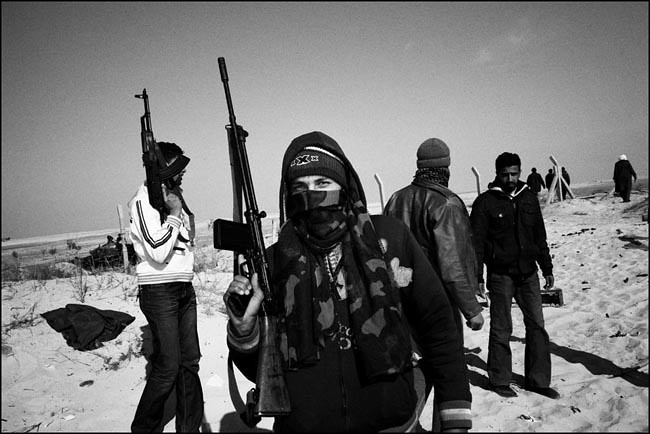Lisa, we're excited to feature an image from your
Sam Houston High School project.
This was part of a large body of work that was a finalist
for POY's Community Awareness Award. Can you tell us
about the project and how it got started?

LISA:
The proposal for the project was put into motion when Sam
Houston High School was placed on the school closure list
by the San Antonio Independent School District. Facing the
loss of the only high school in San Antonio’s predominantly
African-American East Side, the community rose up and
loudly opposed the decision. I started the project not knowing
if I was documenting the last year at a school with a 58-year
history or a year of a school in transition, struggling to turn
itself around and lose the stigma of a failing school. The
original access was granted by the new principal and arranged
by the orginal reporter (who left the paper before we started
the project) and my photo editor, Anita Baca, since I was out
of town as the meetings took place.
TID:
How long did you work on this project?

LISA:
After meetings with administrators, the public information
officers and school faculty, all access issues were figured out
by October 2009, but I wasn’t able to start photographing until
mid-October because of previous commitments. Basically I had
from mid-October until early June. Graduation was on June 6
and it ran that Sunday and Monday. The picture you chose for
TID, I made at the end of my first week of really trying to
immerse at the school.
TID:
Can you talk about how you worked to gain access?
I had almost complete access to the school in terms of being
able to walk in the door and into any classroom. But the
access to the real moments and the students’ lives was what
I had to come up with on my own. And of course that was
the tough part, especially with teenagers who think you are
there to portray their school in a negative light. They really
didn’t know why I was there except their school was being
scrutinized and possibly shut down. I explained over and
over but with 750 students, I was still meeting them and
explaining what I was doing through the school year.
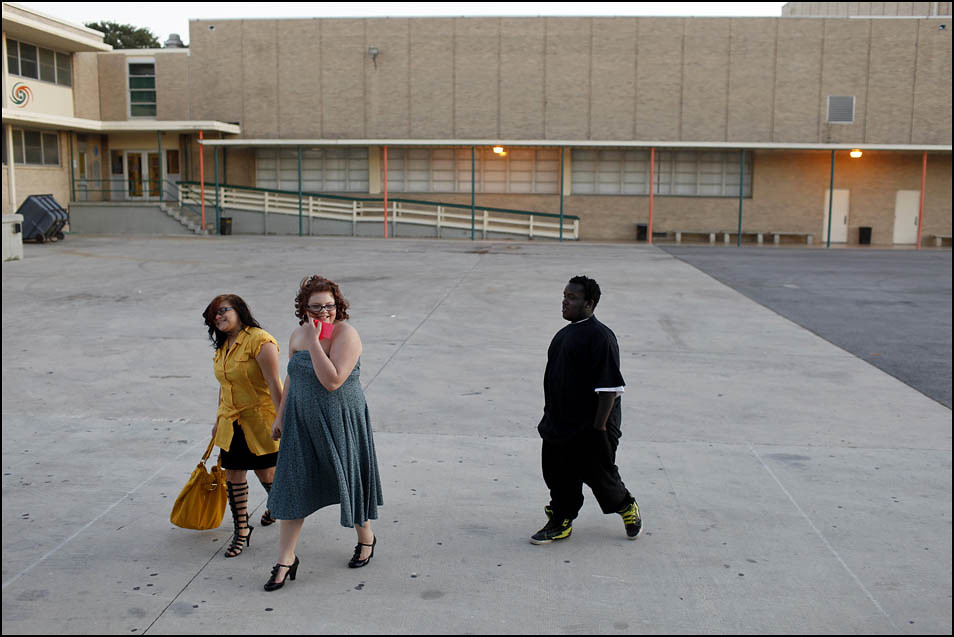
I started out the project photographing the football team
because the coach and the players were very open, and it
was an opportunity to get to know them and sit in the stands,
meeting students and parents in a less structured setting.
Also one of the biggest reasons I followed the football team
was I could go after my shift. I work 7-4 Friday and 8-5
Saturday, so I could almost always get on their bus and could
always make it to the game and not worry about getting called
to go to a last minute assignment or news. The players ignored
me and accepted me so it seemed normal for me to photograph
them at school too which morphed into the other students being
more accepting. Following the football team turned into a section
for the online presentation that didn’t have much to do with
sports, it was about the coaches serving as surrogate fathers to
boys who didn’t have positive male role models in their lives. It’s
one of my favorite parts.
I always sat down with students, asked them questions, listened to
their stories. I talked to them about how to tell their stories. Some
understood, some didn’t. It was a ton of following up with them,
lots of texting, especially for photographing them outside of school.
Access even to the very end was an evolving process. I always felt
at risk of losing the access I had. Teenagers are so aware of the
camera these days and they were very aware of the negative
perception of their school and their neighborhood. They were
very protective of how I would portray their school. That made
it a challenge to photograph some of the more difficult moments
and stories because the students would react to that and tell me,
“You are just going to make us look bad,” or “Miss, don’t take a
picture of that.”
So to counteract that, I went to everything I was invited to. Every
band concert, every awards ceremony, everything positive to show
I wasn’t there only for the negative, which I hoped would allow me
a little more leeway to photograph the “negative.” I thought that
tactic would work better than it did, but I do think it was very
important to do in the long run. And I got to know, and love, more
kids by going to so many of their activities.
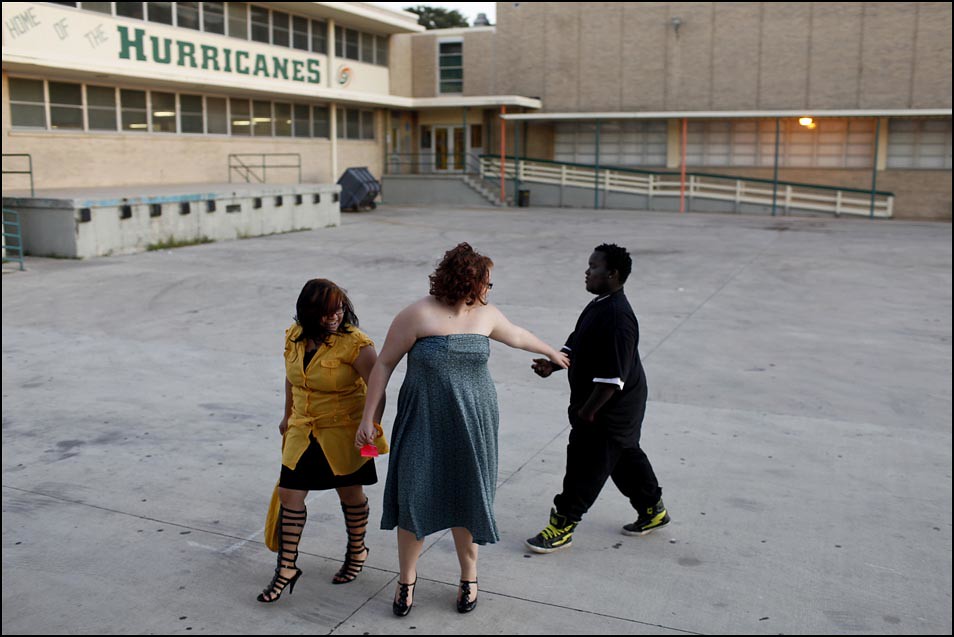
TID:
You made the bulk of the images in between assignments
and on your own time. Can you tell us how you managed to
balance the project with your work and your personal life?
LISA:
Personal life? What’s that? I have to admit I didn’t do much
outside of work between daily assignments, other stories that
I worked on throughout the 9 months, and Sam. I didn’t even
exercise much, which is really important to me but when faced
with the decision to photograph after school/after my shift, I
couldn’t say exercise was more important. In hindsight, keeping
my life more balanced would have cleared my head and helped
the project. It’s hard to see that when you are so immersed. I
felt like I had such a small amount of time to tell such a big,
multi-layered story that had so much potential so I put a lot
on hold, including the important relationships in my life. My
family and friends were extremely understanding and supportive
though.
TID:
Was there any moments of conflict, or times when people didn't
want you to take pictures? If so, how did you handle it?
LISA:
There were many moments of conflict when people didn’t want
me to take pictures. Many students thought I would make them
look bad - their perception of media coverage for their school
and neighborhood was largely negative. When I would raise my
camera to photograph tense moments, the students would ask
me not to photograph. Once, a girl starting punching a boy in
the head and it had to do with me. They were joking about who
I should be photographing and next thing I know she’s punching
him. So, do I take the picture of something my presence actually
caused? After a moment I decided to take the picture, raised my
camera and effectively she stopped. In the process, I upset the
other students. That was kind of a constant battle, at least in
my head, how far to push in that regard.
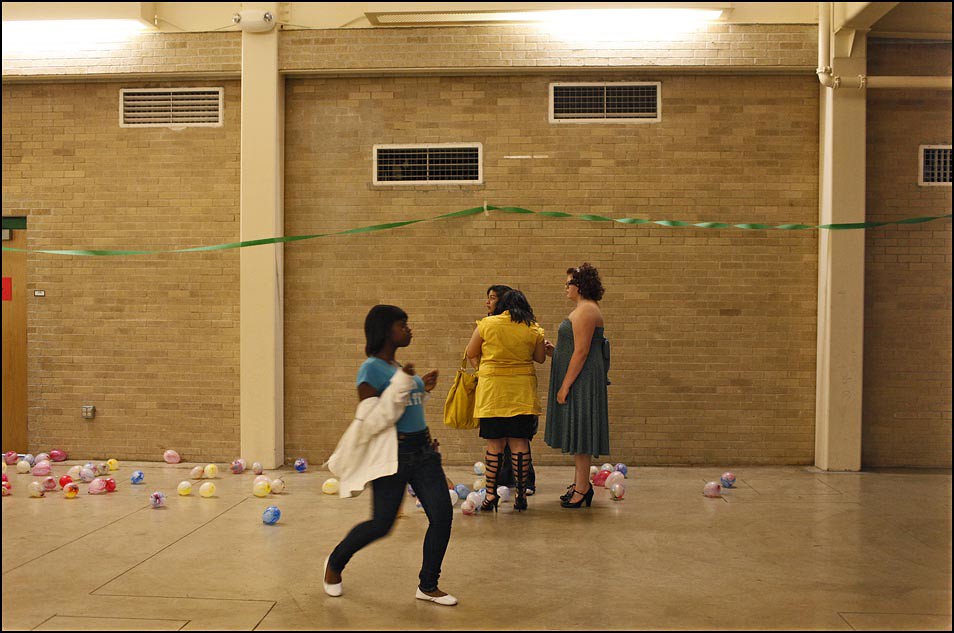
As I’ve described, many a click of the shutter felt like it could
turn the students against me. I had to stay focused on why I
was there, that I wasn’t a good journalist if I didn’t show every
side. I wanted to tell their story as purely as possible, with
balance and fairness.
I’ve made a habit of being focused on light and color as a
storytelling element, but there I couldn’t. Florescent lights,
school uniforms of white, orange or green polos and khaki
pants. I had to focus on moments, and I’m glad because that
was the way I think this story had to be told. I was completely
focused on the moments, the interaction, something I feel
photojournalism often loses in the quest for “style” and “vision.”
I say this because I’ve been lost in that quest myself at times
in my career, as we are hopefully constantly evolving in our
development as visual storytellers.
The project was truly an emotional roller coaster. I wrote about
this in the NPPA article - I noticed I didn’t listen to the radio anymore.
I really didn’t care about anything else, all I could think about was
their stories, and how to tell their stories. I’m already pretty focused
and obsessed when I’m working on a project, so I’m sure I was not
too much fun to be around during this process.
TID:
Now, to the image. Can you give us some insight?
LISA:
I had been hanging out with the students on the left since I
arrived at the homecoming dance. They were gathered
outside and a couple I had recently met were being affectionate
so I was trying to capture that. It was also a really diverse
group so it was a good opportunity to try to tell that part of the
story. I walked into the dance with them and continued to watch
them. Honestly, I don’t remember my exact thinking at that
moment, except I had been watching them. I somehow noticed
the girl dancing near them and anticipated her dancing by. As
you can see, they weren’t paying any attention to her at first. I
don’t remember if I even saw what her shirt said. I’m
embarrassingly inattentive to some details. It was a pretty
simple situation.
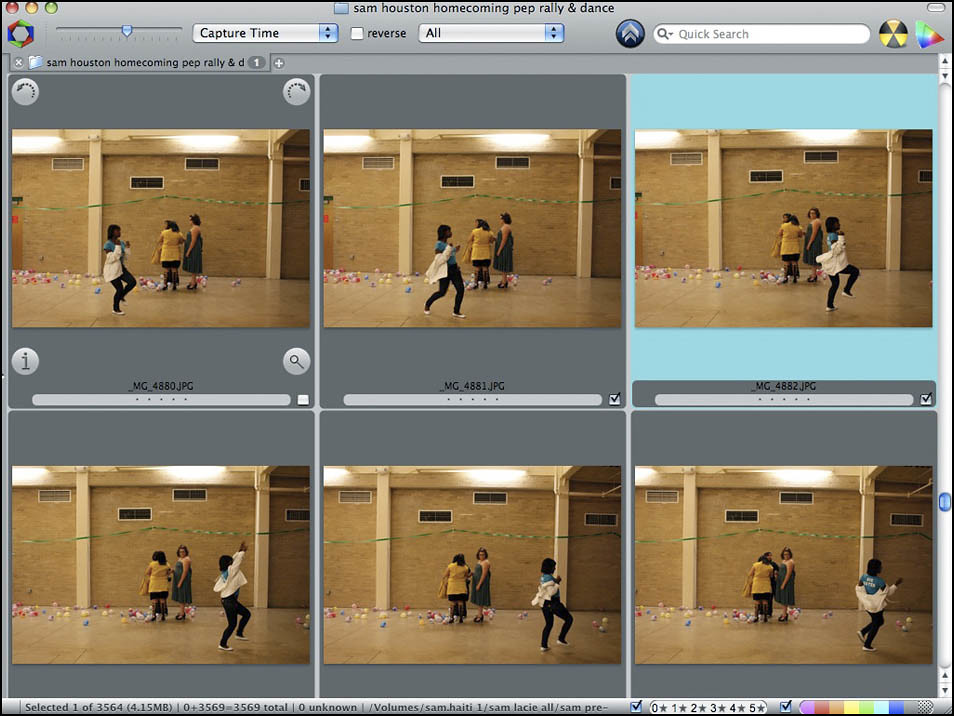
TID:
In situations like a high school dance, people are often
very aware of a photographers presence, and yet you seem
to be able to blend in very well. Can you tell us how you achieve
this?
LISA:
I really don’t know how I achieve this. I feel somehow I am easily
ignored by most people I photograph. I have no idea why or how.
I’m sure this happens with most photojournalists or we wouldn’t be
able to do our jobs but I am always amazed at the situations I walk
into and start to photograph and nobody pays me any mind.
TID:
You've worked on numerous long-term stories. Can you
tell us your motivation behind this type of work?
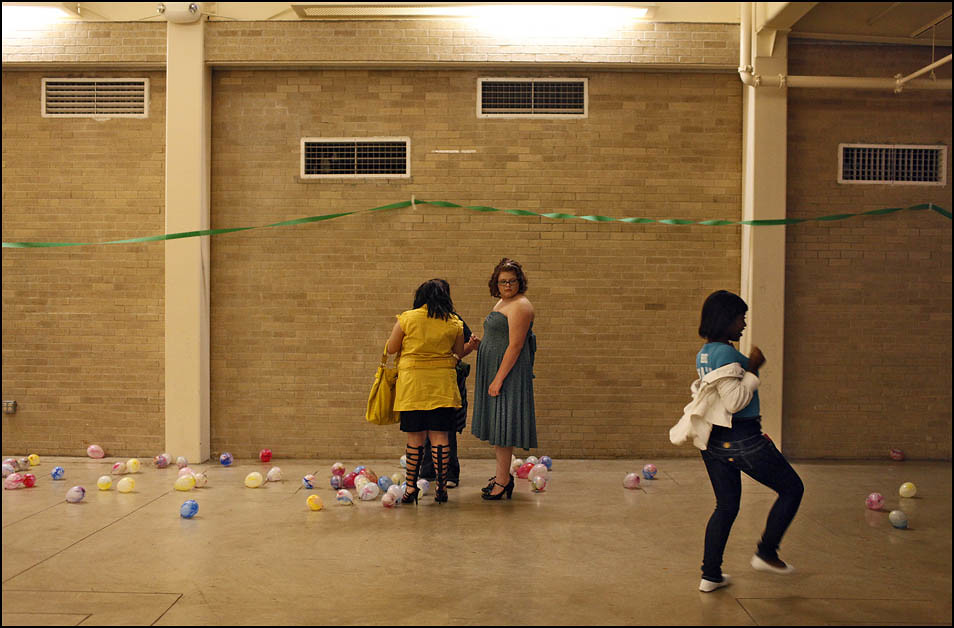
LISA:
The whole reason I want to be a photojournalist is to bring greater
understanding to issues and people’s lives, to educate viewers about
people, places, things they would otherwise not know about, or might
turn a blind eye to. A long term project has so many layers and is
always growing. It can bring depth to a story and people in a way
rarely found within a daily assignment. To me, a story should be told
in layers, with each photograph building upon the next to tell the story
in the truest way, with an ebb and flow of emotions and situations.
The kind of photographer I am is both a blessing and a curse, because
I always think there is a better picture to be made if I just wait long
enough for the moment. I think the light, the composition, if I keep trying
to make it better, that it will be better. I despise the phrase, “good enough,”
because I feel I can and should always do better. So this is especially
applicable to a long term story, because you can tell the story in a
much more complete way.

TID:
Thanks for all your insight Lisa, one final question. Do you have
advice for photographers who want to work on community-type
stories that span over long periods of time?
LISA:
Time is everything, tons of time. The time you put in equals
access, comfort level and our ultimate goal, becoming part of
the scene so life goes on as if you aren’t there. I think showing
the people who’s story you are trying to tell how committed
you are goes a long way in their openness to you. Above all
you must be committed and self-motivated. You can’t expect
anyone else to push you or stay on top of what you are doing.
Most newspaper editors are too busy to deal with long-term
projects on a regular basis.
With a community story, there are many layers and many stories
within the bigger story. It takes listening to people a lot and
engaging them to find out their stories. Sometimes their stories
are the ones you want to tell, sometimes their stories lead to
other stories. Within every situation I’m in, I’m looking for the
next story, the next situation I want to put myself in where I can
make pictures that will tell the story I’m trying to tell.
Stay organized (although I am incapable of following this advice).
Organize names and phone numbers, and try to use the same
notebooks for the story. Stay on top of the editing. Get an editor,
mentor, teacher, trusted friend, etc. to give you feedback throughout.
+++++
Lisa Krantz is a staff photographer at the San Antonio Express-News. She joined the Express-News in 2004 after working at the Naples (FL) Daily News for five years. She received a psychology degree from Florida State University and earned her master’s degree in photography from Syracuse University.
At the Express-News she covers everything from hurricanes to the NBA Championship but her true love is finding and telling intimate, untold stories in her community. She is a three-time NPPA Region 8 Photographer of the Year, in 2005, 2009 and 2010, for a diverse array of assignments and long-term projects.
In 2011, Lisa was awarded third place Newspaper Photographer of the Year in POYi. Her project chronicling a year at Sam Houston High School, a troubled school threatened with closure, was also awarded second place Issue Reporting Picture Story and named a finalist for the Community Awareness Award in POYi. The project was part of the portfolio that earned Lisa the 2010 Scripps Howard Foundation National Journalism Award for Photojournalism and was named a finalist for the ASNE Community Photojournalism Award.
You can view her work at:
http://www.lisakrantz.com/
Sam multimedia:
http://www.mysanantonio.com/news/education/item/Sam-Houston-High-School-Video-Container-3633.php/
+++++
Next week on TID, we'll take a look behind this image from Lexey Swall:

As always, if you have a suggestion of someone, or an image you
want to know more about, contact Ross Taylor at: ross_taylor@hotmail.com.
For FAQ about the blog see here:
http://imagedeconstructedfaq.blogspot.com/
